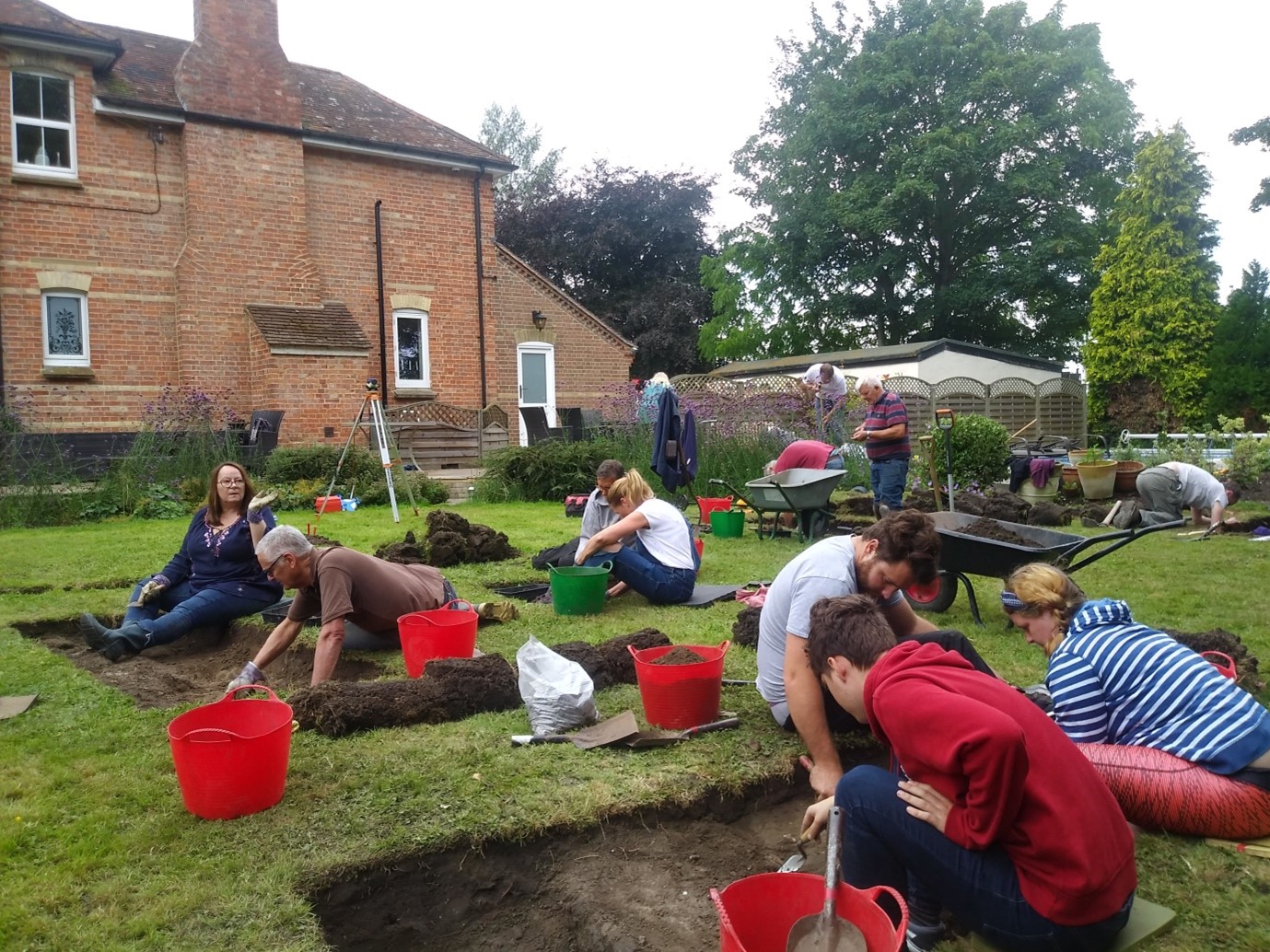The Fifth Continent project
The Fifth Continent is a programme of heritage and environment projects in the Romney Marsh. All of the projects aim to help residents understand how different environmental and human factors work together to produce the landscape that we see today in the Marsh.
With this enhanced understanding, we hope that farmers and landowners learn to value their environmental and heritage assets more and recognise the consequences of any proposed changes to land-use or agricultural practices.
Ultimately, our guidance will have helped landowners improve their own conservation work, and enable greater enjoyment by local people.
Volunteers
Over 100 people have taken part in the heritage activities since the projects began in 2017.
We'd love to hear from new volunteers from all backgrounds any level of previous experience.

Our projects
There are 3 heritage projects which work with volunteers, landowners and the historic churches to explore and better understand the Romney Marsh through its history, environmental development, and archaeology:
- The Hunt for Romney Port
- Sentinels of the Marsh
- Heritage geomorphology and land use.
The Hunt for Romney Port
The Hunt for Romney Port will bring together volunteers from the local community to achieve a single archaeological goal; to find the historic port of Romney.
Historical documents suggest that Romney was an important early-medieval port around the year 1000, when a mint was established there. However, there is no archaeological evidence to clarify exactly where it was: Was it at Old Romney, New Romney or neither?
We know New Romney was an important 12th century trading port, and one of the original Cinque Ports, but there have been few archaeological discoveries from before then. One exception is the recent work at The Marsh Academy site in New Romney, which has revealed some evidence of a medieval waterfront.
We carried out extensive research including three surveys across Old and New Romney. These surveys included fieldwalking, geophysical survey and metal-detecting.
This year we also plan carry out soil sampling, which will confirm the depth of the shingle deposits in the area.
Sentinels of the Marsh
Churches have a special role within the built heritage of Romney Marsh. Located as they are within the wide, flat landscape; they are distinctive, highly visible, and located in the hearts of their communities.
They have been fixed points of reference for centuries; shaping the settlements around them, being a meeting place for the people of the Marsh and featuring in stories and artworks. Of the 25 churches in the Fifth Continent project, 14 are standing and 11 are lost or ruined.
We have carried out churchyard surveys at three of the standing churches: These surveys involve recording the location, condition and inscriptions on each grave marker. We've also been carrying out biodiversity surveys in the graveyards, and introduced bird boxes and wildflowers to enhance the areas for wildlife.
Heritage geomorphology and land use
We work work with landowners in Kent to help them gain a better understanding of any heritage sites on their land. Once identified, we'll also advise landowners on how to protect the heritage on their property. We have carried out archaeological surveys across seven landholdings, and excavations at two locations on Romney Marsh.
These landholdings include historic barns, houses and fields with long forgotten archaeological remains. Volunteers have learnt survey and excavation techniques whilst recording these assets.
By working with the landowners we have been able to identify new sites and suggest ways in which they might be protected. As a project we are also going to carry out biodiversity surveys on these landholdings and suggest ways in which the landowners can enhance their land for wildlife.
The benefits
Our volunteers have loved working on these projects, and speak passionately about the positive impact on themselves, and the local communities on Romney Marsh.
In addition to these projects, we have a number of individual projects which focus on wildlife and the community.
We are helping to restore vegetated shingle habitat across the Dungeness foreland, implementing bumblebee-friendly practices, recording and monitoring key species and habitats across the Marsh as well as enhancing the ditch network on the marsh for wildlife.
Being a volunteer has given me opportunities to learn new skills and knowledge, meet new people and much enjoyment.
I have had a wide variety of ways of contributing, providing me with fantastic experience such as doing archival research, finds processing, recording local heritage, hands on archaeology, field walking, surveying
Alison
The volunteers have learnt new conservation skills, done meaningful work to improve conservation in their local area, and engaged with their community.
Our partners
We have partnered with the Kent Wildlife Trust to deliver these projects, which are all funded by the National Lottery Heritage Fund.